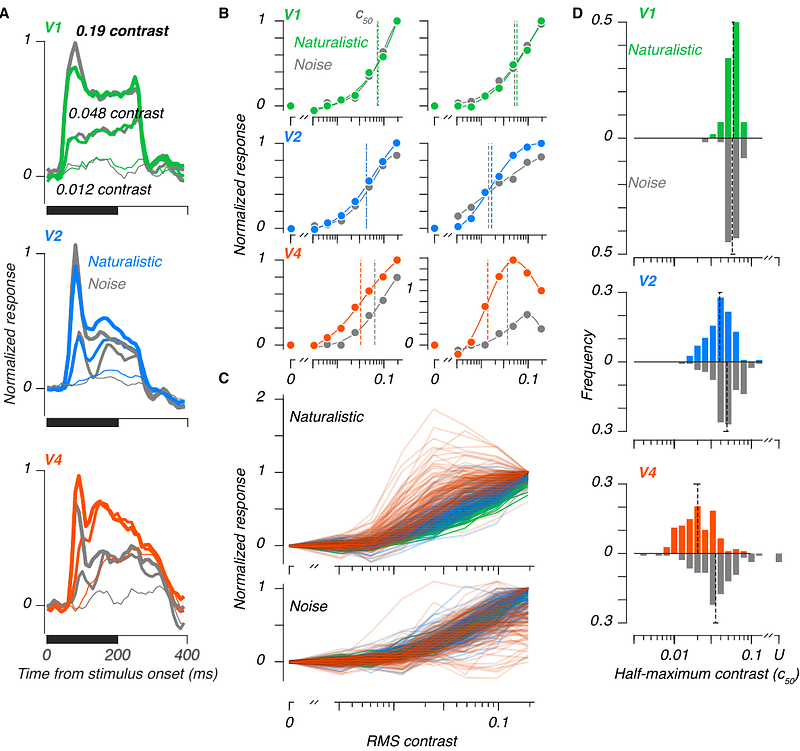Emergence of a contrast-invariant representation of naturalistic texture in macaque visual cortex

Emergence of a contrast-invariant representation of naturalistic texture in macaque visual cortex
Lee, G. M.; Majaj, N. J.; Rodriguez Deliz, C. L.; Kiorpes, L.; Movshon, J. A.
AbstractSensory stimuli vary across a variety of dimensions, like contrast, orientation, or texture. The brain must rely on population representations to disentangle changes in one dimension from changes in another. To understand how the visual system might extract separable stimulus representations, we recorded multiunit neuronal responses to texture images varying along two dimensions: contrast, a property represented as early as the retina, and naturalistic statistical structure, a property that modulates neuronal responses in V2 and V4, but not in V1. We measured how sites in these 3 cortical areas responded to variation in both dimensions. Contrast modulated responses in all areas. In V2 and V4, the presence of naturalistic structure both modulated responses and increased contrast sensitivity. Tuning for naturalistic structure was strongest in V4; tuning in both dimensions was most heterogeneous in V4. We measured how well populations in each area could support the linear readout of both dimensions. Populations in V2 and V4 could support the linear readout of naturalistic structure, but only in V4 did we find evidence for a robust representation that was contrast-invariant.